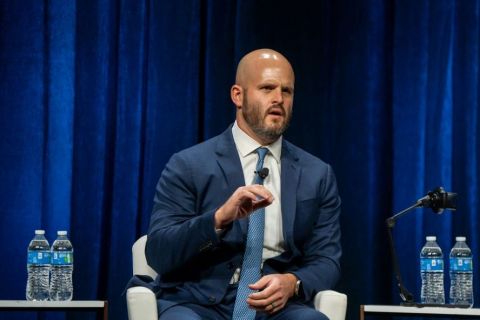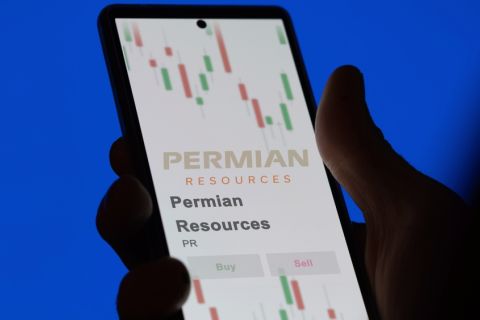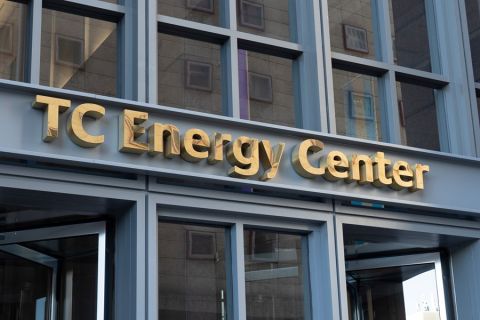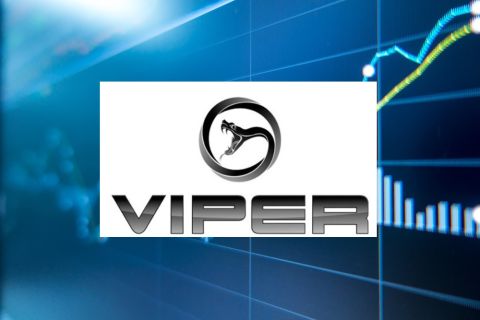Jennifer Pallanich, Senior Technology Editor, Hart Energy: Efficiency and completions is where the rubber hits the road. This unconventional gas company is harnessing the power of both to drive up production. Find out how in this Hart Energy LIVE exclusive interview.
Jon McEvers, Senior Vice President of Operations, Antero Resources: You have got so much consumption of natural gas right now in the U.S. that we've got to be able to produce that somewhere. And it's mainly unconventionals—horizontal, lateral, long laterals, horizontals, fracking. It's fairly centrally located and just a few basins are producing 50% of the gas in the U.S. We operate in the state of West Virginia, [it is a] fantastic state ... to operate in the Marcellus. Very rugged terrain, very unique place to work compared to, let's say the Permian or Louisiana, things of that nature. So logistical challenges are really things that we deal with that other operators don't deal with. But West Virginia's pretty good as far as getting pipelines in the ground. The most recent MVP was just approved to get that pushed through.
So when you're talking about natural gas, you've gotta have pipelines. So it's been fairly friendly to overall develop our midstream, to ... we've gotta move that product. If we're gonna produce it, we've gotta be able to move it, get it to the markets. And that's where Antero [Resources] is really unique. We have a lot of gas that gets down to the Gulf Coast strictly for LNG. So it's a really great marketing strategy that we have. Our gas molecules aren't staying locally in the northeast. They're going west or south.
JP: Spreading the well.
JM: Yep.
JP: Okay. All right. So what sets Antero apart when it comes to unconventional gas from your competitors?
JM: We have a fully integrated midstream, upstream company. Our public sister company is Antero Midstream, so we're able to work very closely, whether it's water delivery, gas sales, liquids marketing. We're able to work very closely... between marketing, midstream, our land group. There's a lot of challenges in West Virginia also because people have owned that land for 200 plus years, right? It's out East, so it's very complicated on that piece, but we have great teams that are able to pull that together. I would just say it's evolved just like overall technologies evolved....How do we apply that technology that maybe was developed in Canada or in the Bakken 15 years ago, or maybe Southern California, but how do we apply those and then how do we bring them in-house and then use our fundamentals to expand and really apply those to our development?
So it has been exciting. Maybe 10 years ago, a 10,000-ft lateral was extremely long. Now, a 20,000-ft lateral is what people target. So that piece is really exciting. It really comes down to the completions. I mean, obviously you have to drill the wells. We have a great drilling team, but completions is really where the rubber hits the road. You've got to get a good completion off. We took a very aggressive approach a number of years ago and built a central facility, a recycling facility. It would fall under our midstream company, so we're able to gather flowback water, produced water, gather it in one central facility, recycle it, clean it up and then pump that [back downhole] for fracs. So definitely over 90% recycling for us, and using that water for fracs which overall reduces fresh water that we need. Leave that fresh water in the rivers. We've got a great network of access to water from the Ohio River. It's fantastic on the water network system that we have. It makes completions one less thing to worry about.
We've got three active drilling rigs. We've had them on contract for three or four years and just having that back and forth over the years of our expectations, their expectations, what we can do, and then the other service companies. You obviously have to have directional, rotary steerable is fantastic. It's a fantastic application in the Northeast. Mud, solids control, when you're drilling as fast as we are, if you're not drilling [8,000 ft], 9,000 ft a day in the lateral, then we're just not focused. So there's a lot of mud cleaning that has to be done. Just looking at those smaller, finer details and how do we make our backyard more efficient? How do we make that better? Ten small things make a large difference, and that's where we're at now. It's just the small things that we can tweak. All the low hanging fruit? That was grabbed a couple years ago. So now it's really all the smaller things.
And then with completions. We've got two active frac crews working in the Northeast, and we've been a partner with them for probably three years. So again, going back and forth with solving problems together and then coming out on the other end ... both groups [are] better for it. And then we can work more efficiently together. [We can have] more [of an] open dialogue. When we see challenges we can address them head on. And instead of being confrontational, we can really work at it in a collaborative sense.
JP: That's your Hart Energy LIVE exclusive. Learn more at hartenergy.com.
Recommended Reading
Baker Hughes Awarded Saudi Pipeline Technology Contract
2024-04-23 - Baker Hughes will supply centrifugal compressors for Saudi Arabia’s new pipeline system, which aims to increase gas distribution across the kingdom and reduce carbon emissions
ProPetro Reports Material Weakness in Financial Reporting Controls
2024-03-14 - ProPetro identified a material weakness in internal controls over financial reporting, the oilfield services firm said in a filing.
Stockholder Groups to Sell 48.5MM of Permian Resources’ Stock
2024-03-06 - A number of private equity firms will sell about 48.5 million shares of Permian Resources Corp.’s Class A common stock valued at about $764 million.
TC Energy Appoints Sean O’Donnell as Executive VP, CFO
2024-04-03 - Prior to joining TC Energy, O’Donnell worked with Quantum Capital Group for 13 years as an operating partner and served on the firm’s investment committee.
Viper Energy Announces Pricing of Diamondback’s Secondary Common Stock Offering
2024-03-06 - Viper Energy will not receive any of the gross proceeds from Diamondback’s secondary offering of its Class A common stock.






